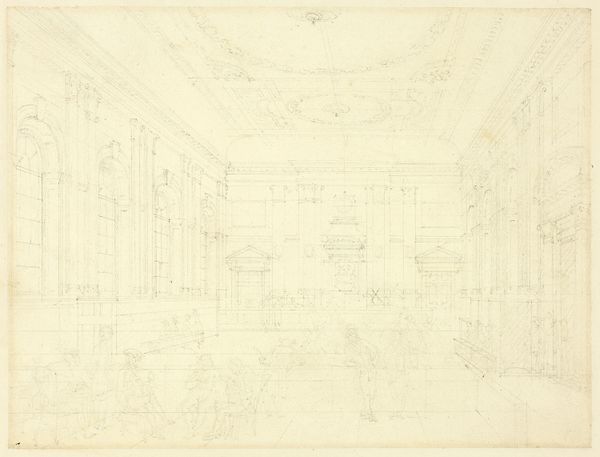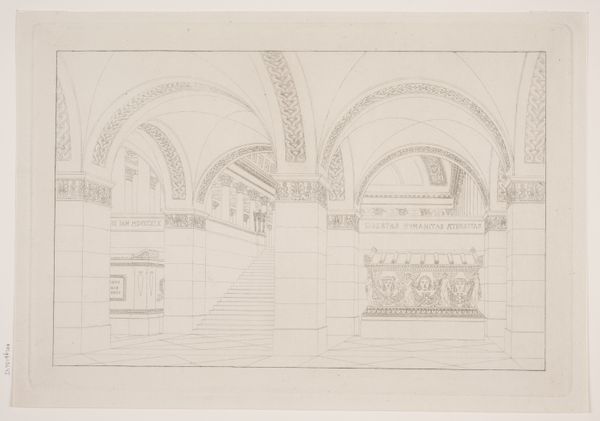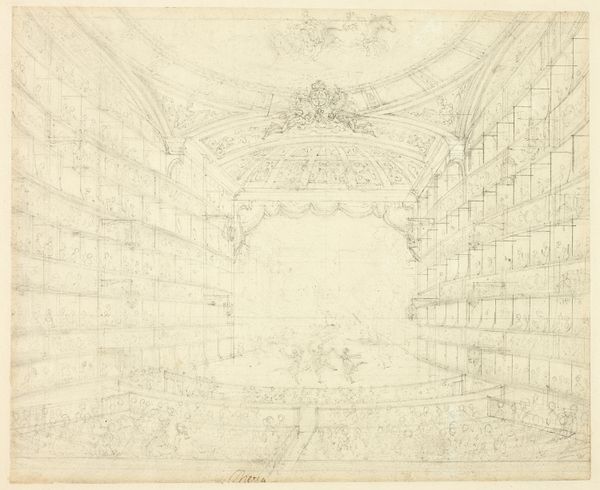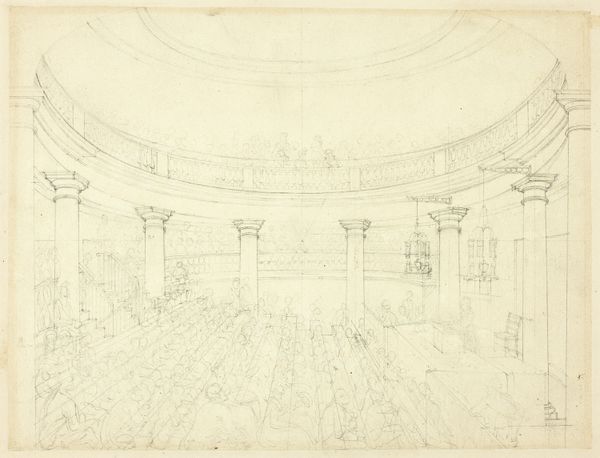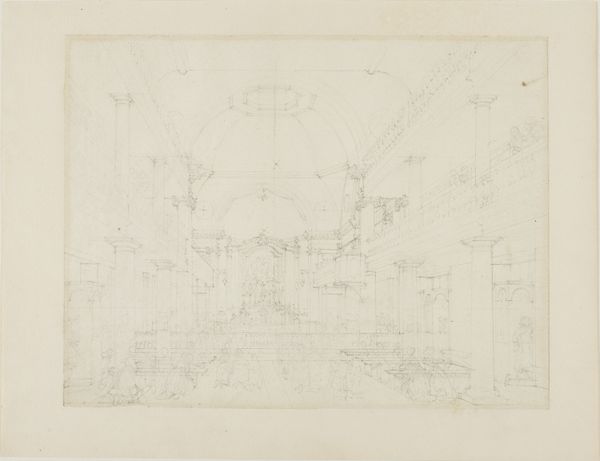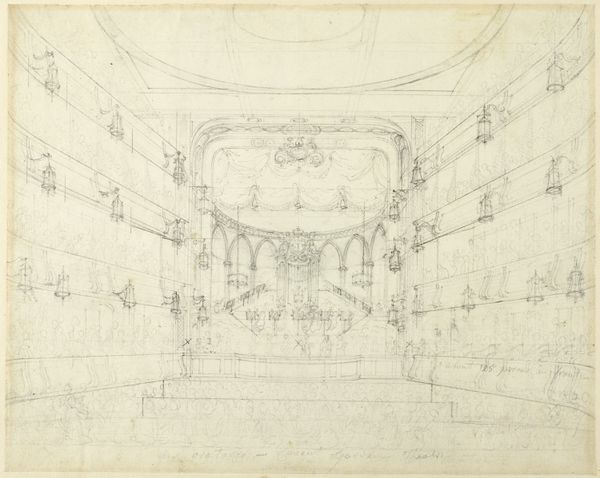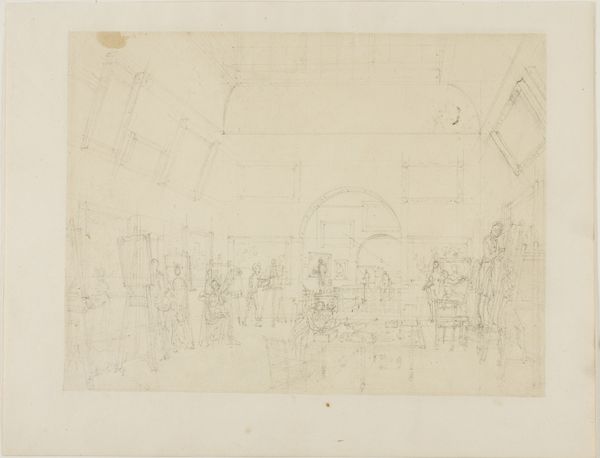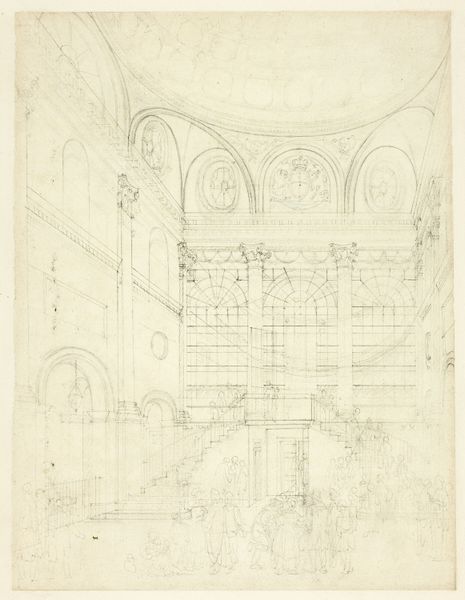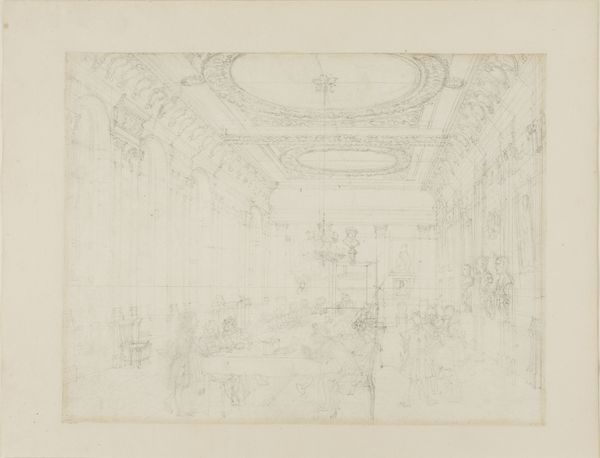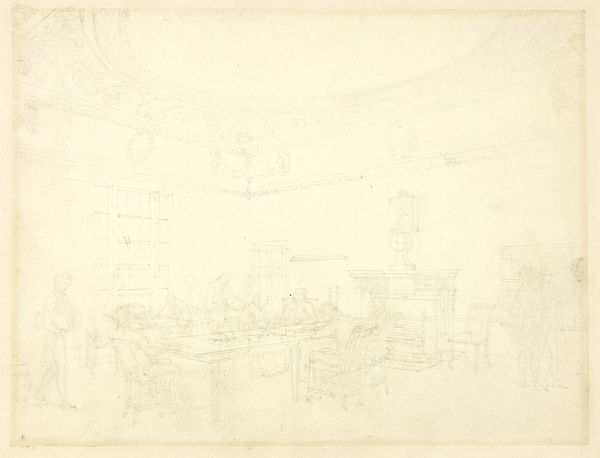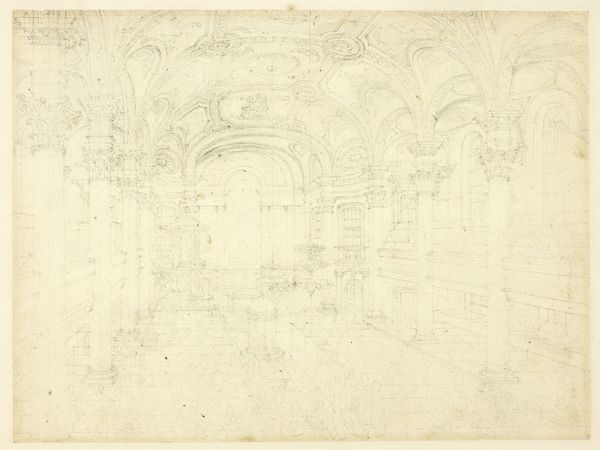
Study for Royal Cock Pit, from Microcosm of London c. 1808
0:00
0:00
drawing, print, etching, paper, graphite, architecture
#
drawing
#
neoclassicism
# print
#
etching
#
landscape
#
etching
#
paper
#
geometric
#
15_18th-century
#
line
#
graphite
#
architecture
Dimensions: 198 × 275 mm
Copyright: Public Domain
Curator: This delicate drawing by Augustus Charles Pugin, created around 1808, is entitled "Study for Royal Cock Pit, from Microcosm of London," currently residing at The Art Institute of Chicago. What are your initial thoughts? Editor: The first word that comes to mind is "ghostly." It’s almost like a faded memory or an architectural rendering of a place no longer quite present. There is so much frenetic activity captured here, and its airy nature makes me think of the ghosts of the space. Curator: That's quite apt. Pugin, through his meticulous rendering, isn’t just capturing a space, but a cultural institution steeped in specific power dynamics of the time. Cockfighting, particularly within the Royal Pit, reflects a spectacle tied to aristocracy, wagering, and a brutal engagement with animal life. Editor: I am drawn to the semi-circular architecture – it immediately conjures images of ancient amphitheaters, and speaks to archetypal imagery. It's as if this space for animal combat deliberately evokes arenas of Roman gladiators, blending classicism with violence. Curator: Precisely! It borrows from neoclassical principles while simultaneously reflecting the harsh realities of early 19th-century British society. The geometric shapes, lines, and forms are neat but overlay scenes of such raucous conflict. There is real discordance present. Editor: How do you interpret the mass of figures crammed into the sketch? To my eye they don't have any individuality and rather coalesce into a single shape. Curator: I read it as a conscious choice, a commentary perhaps on the blurring of individual responsibility within such collective displays. The drawing implies how deeply entrenched these activities were. We must challenge romantic notions of history. These spaces weren't politically neutral; they embodied and reinforced hierarchies. Editor: The sketch really invites one to confront how symbolic spaces inform the past and how those symbols continue to resonate and affect current dialogue on class, leisure, and power. Curator: Indeed, art allows us to confront these layered histories. It’s far more than what seems on the surface of architectural detail. Editor: An evocative experience when we consider how symbols impact history and societal norms.
Comments
No comments
Be the first to comment and join the conversation on the ultimate creative platform.
